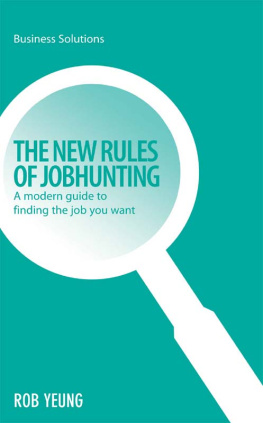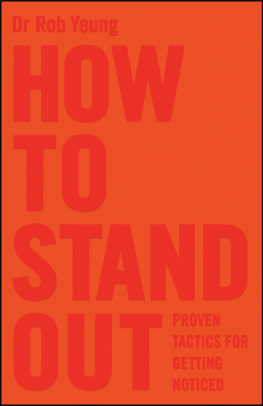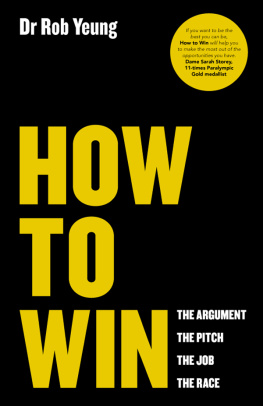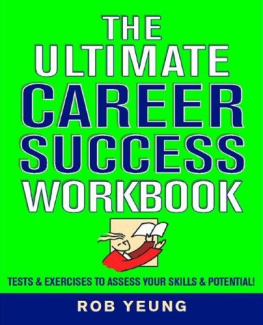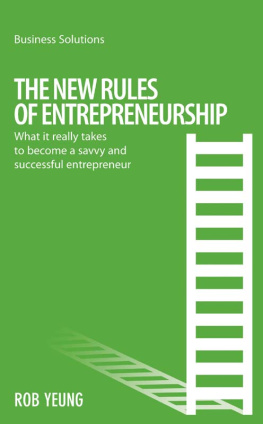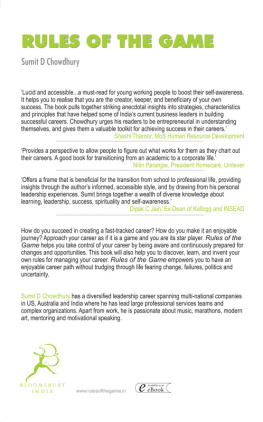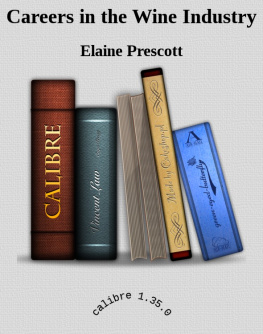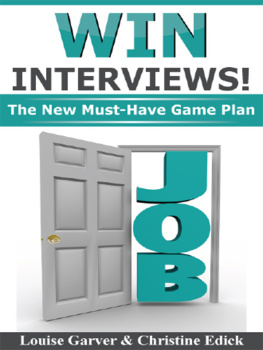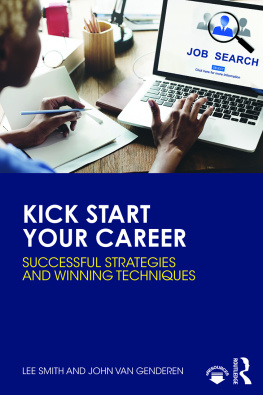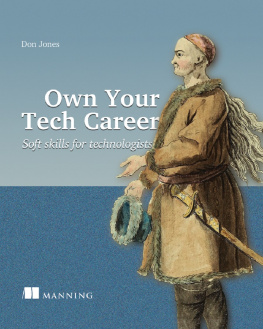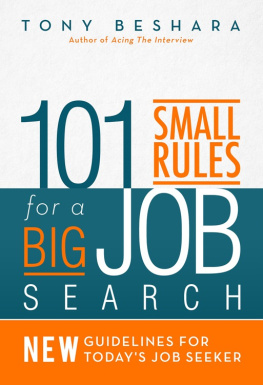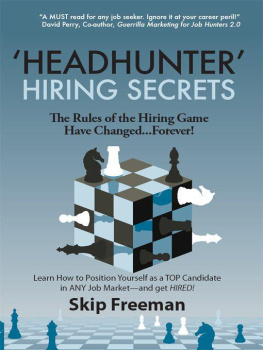THE NEW RULES OF JOBHUNTING
A MODERN GUIDE TO
FINDING THE JOB YOU WANT
Rob Yeung
This book was previously published as The Rules of Job Hunting
Copyright 2011 Rob Yeung
Cover design: Jim Banting
Published in 2011 by Marshall Cavendish Business
An imprint of Marshall Cavendish International
PO Box 65829, London EC1P 1NY, United Kingdom
and
1 New Industrial Road, Singapore 536196
www.marshallcavendish.com/genref
Other Marshall Cavendish offices: Marshall Cavendish Corporation. 99 White Plains Road, Tarrytown NY 10591-9001, USA Marshall Cavendish International (Thailand) Co Ltd. 253 Asoke, 12th Flr, Sukhumvit 21 Road, Klongtoey Nua, Wattana, Bangkok 10110, Thailand Marshall Cavendish (Malaysia) Sdn Bhd. Times Subang, Lot 46, Subang Hi-Tech Industrial Park, Batu Tiga, 40000 Shah Alam, Selangor Darul Ehsan, Malaysia
Marshall Cavendish is a trademark of Times Publishing Limited
The right of Rob Yeung to be identified as the author of this work has been asserted by him in accordance with the Copyright, Designs and Patents Act 1988.
All rights reserved
No part of this publication may be reproduced, stored in a retrieval system or transmitted, in any form or by any means, electronic, mechanical, photocopying, recording or otherwise, without the prior permission of the copyright owner. Requests for permission should be addressed to the publisher. The author and publisher have used their best efforts in preparing this book and disclaim liability arising directly and indirectly from the use and application of this book. All reasonable efforts have been made to obtain necessary copyright permissions. Any omissions or errors are unintentional and will, if brought to the attention of the publisher, be corrected in future printings.
A CIP record for this book is available from the British Library
eISBN 978-981-4346-96-2
Printed in Singapore by Fabulous Printers Pte Ltd

Contents
Foreword
Working life aint simple any more. There was a time when you worked hard, your employer looked after you, and you just carried on until you received your gold carriage clock on retirement. But that simple career path is dead. There are more threats in the world mergers and acquisitions, globalization and jobs being outsourced or offshored, downsizing programs, and job cuts. And these have turned the workplace into a minefield of treacherous personalities, unexploded resentments, and ticking egos. Whom can you really trust? What do you need to do or say to get ahead? And what exactly are employers looking for?
But there are more opportunities too. You arent tied to the one organization any more you can move around and seek bigger pay rises, greater responsibility, more interesting challenges. Employers no longer look down on people who want to take career breaks to go traveling or do something different. You can go freelance or set up your own business and try to make your first million. The world is your oyster.
In this complex world of work, the rules of work have changed. We can all think of people who got promoted who didnt deserve to. Come to think of it, we can all probably think of someone who does deserve to get promoted, but hasnt been. And, to add insult to injury, on top of our day-to-day jobs, were expected to deal with office politics, to be a good leader and team player, and to network. And how do you get headhunted exactly? All of these are things that no one ever really tells you how to do.
Well, this series tells you how to do these things. And this book looks at the rules of job-hunting.
It used to be the case that you listed your education and experience on a CV and sent it off to employers. If you were lucky, they would invite you in for an interview and select the most skilled candidate. But the rules of the game have changed. A big chunk of jobs are never advertised butfilled through word of mouth. CVs can take innumerableforms to show off your best attributes and hide your weak spots. And interviewers have new, devious tools and techniques to put you under pressure. So this book is filled with insider advice and tips to help you track down and secure the right job for you.
But lets cut to the chase. After all, who has the time to sit and read hefty management tomes? Too often, an author has a handful of great ideas, but then ruins it by spending hundreds and hundreds of pages explaining it carefully in excruciating detail, giving too much background and yawn yawn yawn ... Ive lost the will to live.
When I read one of those books, I start to flick through the chapters and pages with increasing impatience wanting to shout, Come On, Get To The Point! Ah, but there is a reason why so many books are so long. Many publishers want their authors to write lengthy books so that they can slap on a big fat cover price. So this book is short and full of practical, pithy advice in bite-sized chunks.
If you want to know how to nail the right job but dont have the time to plow through Bible-sized manuals or books that talk down to you then this is the book for you.
Finally, if you have any odd experiences or job-hunting tips drop me an email. Ill shove it in the next edition and youll get your name in print!
Rob Yeung
Introduction
If you consider the whole job-hunting process, it would seem at a first glance that the rules of job-hunting havent really changed that much over the years. You still put together a CV listing your skills and experience; perhaps you try to mention a few interesting hobbies or interests to grab the recruiters attention. You still submit your CV to an employer or perhaps through a third-party recruitment consultancy or executive search firm. And if you are lucky, you are still invited to interview. Yes, it all looks pretty familiar so far, doesnt it? But while it all looks safe and familiar on the surface, the reality is that job-hunting has actually changed hugely in recent years as a result of increasing competition between organizations to reduce costs. More and more organizations are trying to offload employees by restructuring, downsizing, outsourcing, and outsourcing. More and more jobs are being handed to contractors, consultants, and other temporary staff. And for the employees that remain, they are being asked to be more adaptable and hard-working. After all, the same (if not more) work needs to be done just by fewer people.
All of this has meant that organizations have got that much more careful about hiring people. Human resources departments and line managers are now much more canny at screening candidates and putting them through many more challenging tests and interviews to choose the very best. As a business psychologist, I am hired by organizations to help with their recruitment and interviewing programs. And having interviewed hundreds of candidates and designed dozens of assessment centers in organizations ranging from international investment banks and law firms to airlines, insurers, and transport companies, I am going to share with you some of the unspoken rules and guerrilla tactics that will capitalize on your strengths and boost your chances at every stage of the job-hunting process. Ive split the book into five parts:
Understanding the product. Your first step is to understand the product that is you. What do you really want out of your career? What can you bring to a new employer? And what are the limitations and personal flaws that could scupper your chances? Identifying your goals and aspirations, strengths and weaknesses, will enable you to focus on the right opportunities for you and present yourself in the most favorable light to interviewers.

